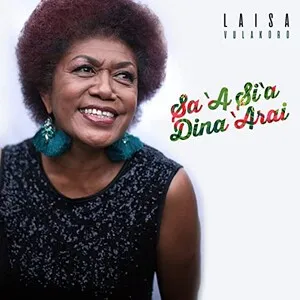Fijian music is a living mosaic that blends ancient Indigenous (iTaukei) vocal traditions, drum-based dance music, and later church hymnody with guitars, ukuleles, and contemporary island-pop rhythms. It spans ceremonial meke (dance-songs with poetry, chants, and percussive accompaniment), intimate string-band ballads known locally as sigidrigi, and modern dance-pop hybrids like vude.
Core sounds include layered group harmonies, call-and-response refrains, and bright strumming textures on guitar and ukulele. Indigenous instruments such as the lali (slit drum) and derua (bamboo stamping tubes) provide powerful rhythmic punctuation for communal performances, while modern productions add drum kits, keyboards, and reggae-influenced bass lines. Indo-Fijian devotional and light-classical elements (harmonium, tabla, dholak) also appear, reflecting Fiji’s multicultural landscape.
The result is a style that feels celebratory and communal, equally at home in village greens, church choirs, dance halls, and contemporary stages—rooted in place yet open to the wider Pacific and global currents.
Before European contact, iTaukei communities cultivated rich musical practices centered on ritual, storytelling, and dance. Meke—performed with poetry, chanted vocals, and percussive accompaniment (lali slit drums, derua bamboo stamping tubes, handclaps, and body percussion)—functioned as oral history, social glue, and spiritual expression.
Wesleyan Methodist missionaries arriving in the 1830s introduced hymn singing and Western harmony. Communal choral practices flourished, with multi-part singing and diatonic hymnody blending into local aesthetics. Brass-band traditions (via colonial and service ensembles) further added processional and ceremonial colors.
Guitars, ukuleles, and imported song forms catalyzed sigidrigi (often glossed as “sing and drink”)—a Fijian string-band tradition featuring close harmonies, lilting strums, and lyrical themes of love, communal life, and the sea. Popular farewell songs like “Isa Lei” became emblematic, consolidating a sentimental repertoire that traveled widely across the Pacific.
From the late 1980s, artists synthesized disco, soul/R&B, and reggae grooves with Fijian melodic sensibilities to form vude—an upbeat dance style marked by catchy hooks, group chants, and feel-good rhythms. Parallel currents of roots reggae and island pop also took hold, shaping a modern “Pacific sound.”
Contemporary Fijian music spans choral worship, meke in cultural events, vibrant string-band revivals, vude bangers, and reggae-pop crossovers. Diaspora artists link Fiji with Aotearoa/New Zealand, Australia, and Hawai‘i, while digital production and social media accelerate collaboration and stylistic exchange across the Pacific.








